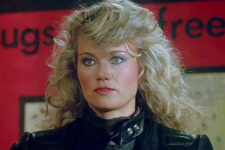
The evolution of horror cinema can be traced back to a groundbreaking moment in 1896, when George Méliès, a magician and pioneer in filmmaking, directed “Le Manoir du Diable” (The House of the Devil). This three-minute silent film, also known as the first horror movie, marked a significant turning point in the history of cinema, weaving a narrative that combined humor, horror, and pioneering special effects.
Méliès: A Magician’s Transition to Filmmaking
Before his foray into filmmaking, Méliès was an accomplished magician and theater manager-director. His journey into cinema began after a chance encounter with the Lumière brothers’ short films, which inspired him to explore the potential of this new art form. Méliès’ background in magic proved invaluable, as he pioneered cinematic techniques such as dissolves, slow motion, superimposition, and double exposure. These techniques would not only define his films but also set a precedent for future cinematic endeavors.
The Serendipitous Birth of “Le Manoir du Diable”
The creation of “Le Manoir du Diable” stemmed from a fortuitous camera malfunction during an outdoor street scene shoot. The jammed camera produced strange effects, with objects and people mysteriously appearing and disappearing. Intrigued by these accidental illusions, Méliès realized he could intentionally recreate them, laying the groundwork for the special effects in his horror film.
Without access to modern technology or special effects teams, Méliès relied on his camera and physical materials to craft the visual wonders of “Le Manoir du Diable.” His innovative methods allowed figures to vanish, transform into bats, and dissolve into smoke, achieved through multiple exposures and strategic camera stops. These effects were not only visually compelling but integral to the film’s narrative, making Méliès not just an illusionist with a camera but a storyteller as well.
“Le Manoir du Diable” wasn’t designed to terrify in the way modern horror films do. Instead, it blended humor with horror, featuring slapstick moments and physical comedy reminiscent of later comedic cinema icons like the Marx Brothers and Charlie Chaplin. This blend of genres was a hallmark of Méliès’ work, reflecting his desire to amuse and spook audiences simultaneously.
Méliès’ Influence on Horror and Vampire Genre

While “Le Manoir du Diable” is sometimes considered the first vampire movie due to a scene where a bat transforms into a human, this interpretation is debated. However, Méliès’ use of such imagery contributed to the early development of the vampire subgenre. The film also introduced several classic horror motifs, like skeletons and ghosts, that remain central to horror cinema today.
Legacy and Rediscovery of Méliès’ Work

Méliès’ impact on early cinema extended beyond “Le Manoir du Diable.” He directed hundreds of films, including several other horror titles, and even remade “Le Manoir du Diable” as “Le Château Hanté” (The Devil’s Castle) just a year later. This practice of remaking films highlights that the concept is not a modern Hollywood invention.
Remarkably, “Le Manoir du Diable” was almost lost to history. It was presumed lost for decades until a copy was rediscovered in the New Zealand Film Archive in 1988. This recovery was crucial in piecing together the history of the horror genre.
The actors in “Le Manoir du Diable,” mostly anonymous due to the era’s practice of not crediting performers, played a significant role in film history. The woman conjured from the cauldron was likely Jehanne d’Alcy, Méliès’ wife, while Mephistopheles was possibly played by Jules-Eugène Legris.
George Méliès’ “Le Manoir du Diable” marks a pivotal moment in cinematic history, birthing the horror genre and demonstrating the power of film to evoke a range of emotions. Méliès’ blend of narrative storytelling, visual illusions, and early special effects laid the foundation for the horror genre, influencing countless filmmakers and leaving a legacy that continues to resonate in cinema today.









